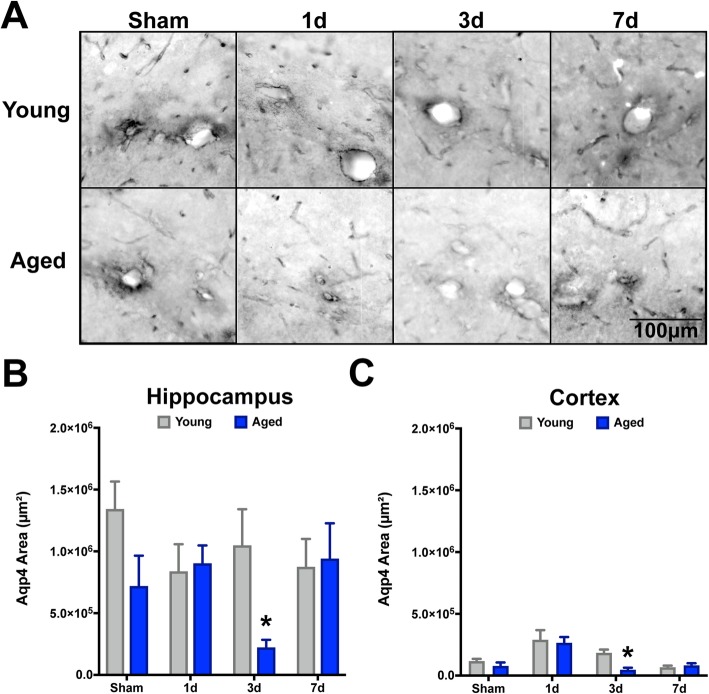Fig. 4.
Aquaporin-4 displayed a delayed transient response to TBI in the aged brain. Serial sections comprising the dorsal hippocampus were imaged for aquaporin-4 (Aqp4) labeling and quantified as the pixel positive area for each of the 8 groups. Aqp4+ threshold was set on young sham tissue. Overall, in the hippocampus there was a significant decrease in Apq4 staining due to advanced age (F (1, 28) = 4.506, P = 0.0435), which was significantly reduced compared to young at the 3-day post-injury interval (*p < 0.05). This age-related loss of Aqp4+ recovered to sham-like levels at the 7-day post-injury interval. Additionally, for the hippocampus, there were no significant overall differences observed due to interval, nor an interaction effect. Comparatively, for the neocortex, there was not an age-related effect, but there was a significant effect due to interval (F (3, 28) = 14.03, P < 0.0001), which was demonstrated by significant alterations in aged mice at the 3-day interval, as well (P = 0.0473). Data were analyzed using two-way ANOVA with Sidak-Holm post hoc correction examining pairwise interactions for each interval. n = 4–5/group. Data are presented as mean ± SEM. Young, gray bars; Aged, blue bars

